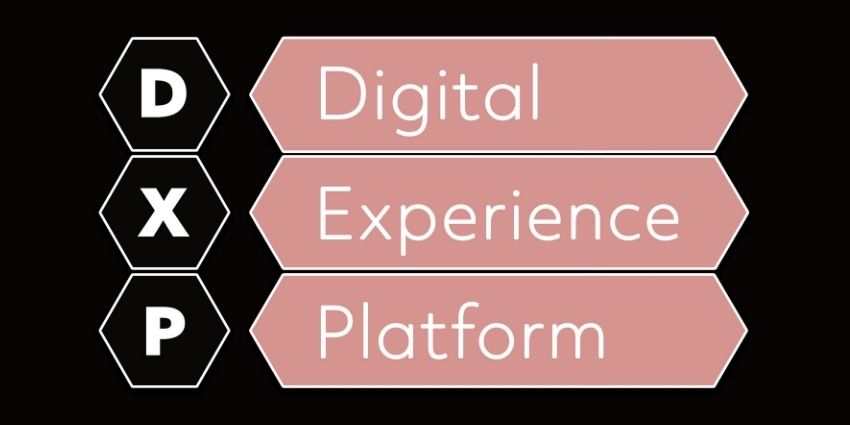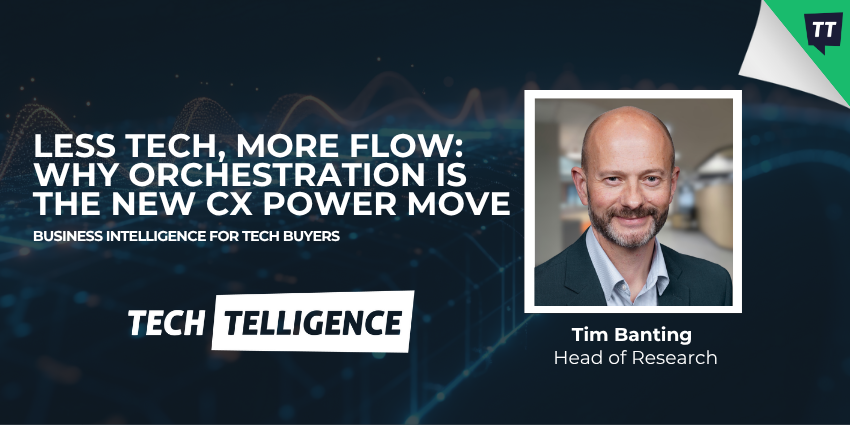Digital experiences are the new norm, driving how companies and customers interact throughout the purchasing journey.
Companies recognize this and continually create new initiatives to improve end-to-end experiences, nurturing, engaging, and empowering buyers.
Digital Experience Platforms (DXPs) allow organizations to centralize these efforts.
Indeed, via a DXP, businesses can serve customers by enabling intuitive website interactions, personalized marketing campaigns, commerce experiences, and much more.
As of 2025, the DXP market is growing at 11.9 percent, and Gartner predicts that 70 percent of businesses will invest in composable DXP technology by 2026.
Yet, let’s take a step back and consider: how exactly do digital experience platforms work, what can they do, and which vendors are leading the way?
What Is a Digital Experience Platform?
A Digital Experience Platform (DXP) is a software solution that comprises tools to help organizations create and manage digital experiences.
It goes beyond the “Content Management Systems” (CMS) organizations once relied on, stretching across the end-to-end experience.
Indeed, a DXP combines solutions for everything from creating, publishing, and optimizing marketing materials to running post-sales activities.
As such, they handle multiple digital channels, orchestrate personalized customer experiences, and integrate data across an organization’s technology stack.
Typically, a DXP includes (or connects to) tools for:
- Content Management
- E-commerce
- Personalization
- Analytics
- Customer Data Management
- Marketing Automation
- Integration/Orchestration
The overall goal is to allow businesses to connect with consumers contextually at every digital touchpoint in a personalized and intelligent way.
The Composable Digital Experience Platform
Traditionally, DXP vendors offer “all-in-one” platforms packed with proprietary systems. These offer everything from content and email marketing to out-of-the-box e-commerce tools.
However, while these monolithic platforms may meet the needs of organizations seeking a single integrated toolkit, the market is shifting toward composable DXPs.
Composable DXPs emphasize modularity, flexibility, and interoperability. They allow organizations to pick and choose the best tools and services from various vendors and assemble them into a custom solution.
The approach is ideal for companies that wish to combine specialized solutions as part of one cohesive platform. These specialized solutions include:
- A preferred CMS, like Umbraco or Drupal
- A marketing automation solution (Marketo, HubSpot, etc.)
- A best-in-class e-commerce engine (Shopify, Wix, etc.)
- A specialized analytics or optimization platform
Because composable DXPs use open APIs to integrate systems, businesses can adopt new technologies faster, replace outdated components more seamlessly, and avoid vendor lock-in. Such flexibility becomes crucial as customer needs evolve or new digital channels (like XR or large language models) emerge.
Digital Experience Platforms: The Emerging Use Cases
Ultimately, a DXP overcomes the limitations of conventional disconnected CMS, CDP, and content production solutions, with an all-in-one control center for managing and improving customer journeys.
As such, a DXP helps to deliver cohesive omnichannel experiences, access valuable insights, scale personalization, and adapt rapidly to changing customer needs.
Modern solutions also empower companies with automation and AI tools, designed to streamline customer engagement opportunities.
These AI capabilities bring many emerging use cases, like the five below.
1. Intelligent Re-Engagement (Across Channels)
74 percent of customers today start and finish their journeys on different digital channels. The trick is keeping them engaged throughout the journey.
With a DXP platform, companies can segment and retarget customers who abandon a purchase or content interaction, and reconnect on the right channel – improving conversion rates.
For instance, with real-time journey analytics, businesses can identify and analyze abandonment events. They can then leverage behavioral, attribute, and preference data, using those insights to drive customers back to their website quickly.
Many solutions also include AI tools that can make proactive product recommendations, or suggest relevant upsell and cross-sell customers, increasing profits.
2. “Don’t Lose” Campaigns
Companies can use DXP solutions to stop customer churn before it happens.
Using advanced machine learning models, companies can predict which customers are at risk of churn and automatically deliver hyper-targeted, channel-appropriate offers to those leads.
In doing so, they increase the chances of winning back disengaged or lapsed customers.
Even after a purchase, DXP platforms can help boost retention and loyalty rates by allowing companies to target customers with personalized content or loyalty and referral programs.
Ultimately, DXP systems help businesses boost conversions and customer lifetime value (CLV).
3. Conversion Optimization
Optimizing conversion means moving away from a one-size-fits-all strategy and instead curating each customer’s experience based on their unique journey.
Instead of just delivering generic offers across channels, companies can use their DXP platforms to align content with specific groups.
With a digital customer experience platform, companies can harness intelligent routing systems to divert high-likelihood leads to specialized campaigns and sales teams.
Additionally, they can send targeted marketing messages aligned with prospect interests to each customer.
Many DXPs offer in-depth analytics and reporting systems that can help businesses better understand which conversion strategies drive the best results across channels.
4. Contextual Recognition (Hyper-Personalization)
When they’re aligned with customer data platforms (CDPs), DXPs can hyper-personalize various stages of the customer experience.
Some solutions can personalize customer experiences even when they’re not logged into an account, using “contextual recognition” to align content with specific behaviors.
For instance, if a customer makes a purchase and then returns to a site, a platform – like Adobe’s DXP solution – can use its identity graph to recognize them through anonymous identifiers like device ID.
From there, it links those identifiers to known insights and pulls behavioral histories to personalize the next experience or suggest a relevant product.
5. Increasing Lifetime Value
With Don’t Lose campaigns and personalized content, DXP solutions can help improve lifetime value. However, they take things a step further, too, using real-time customer profiles to intelligently upsell or cross-sell products.
AI-powered tools can automatically activate new offers across channels as a customer’s profile updates or build personalized campaign strategies for businesses.
DXPs can do all this while still adhering to customer consent preferences.
Additional Use Cases for DXP Platforms
Beyond the use cases mentioned above, DXP solutions also empower organizations to:
- Manage Complex Product Portfolios: Large e-commerce sites benefit from advanced product data management and dynamic content delivery.
- Ensure Consistency Across Branch Locations: Brick-and-mortar stores can offer localized content or promotions, keeping branding unified yet relevant to local audiences.
- Streamline B2B Partner Platforms: Manufacturers, distributors, and other B2B organizations often rely on secure partner portals or account-specific dashboards. DXPs unify these channels under a single architecture.
- Support Immersive Experiences: By integrating extended reality (XR) solutions, businesses can deliver augmented or virtual experiences seamlessly through a DXP’s orchestration tools.
Beyond that, these tools empower companies to unify data from diverse sources to gain a more comprehensive view of their customers. That’s a critical component in helping companies deliver truly personalized experiences across every touchpoint.
Digital Experience Platforms: Providers to Watch
There are many compelling options focusing on trends like composability, AI, and hyper-personalization.
Some of the top vendors worth watching include:
- Adobe: The Adobe Experience Cloud includes a full DXP solution packed with solutions for managing customer data, content, and analytics. Adobe focuses heavily on ongoing innovation, with agentic AI solutions that can automate content creation tasks without compromising brand guidelines. It also benefits from a rich partner network.
- Optimizely: Optimizely emphasizes composable, modular systems with its Optimizely One platform. The platform integrates a customer data platform (CDP), personalization features, content management, and AI tools. (See how Optimizely compares with Adobe).
- Acquia: Acquia’s approach to DXP centers on open-source technology and “composability”. It leverages a Drupal-based content management framework, plus a CDP and marketing tools like Acquia Campaign Studio. The benefit here is the robust developer community, which can build various plugins and modules for specialized use cases.
- OpenText: Recognized for its emphasis on content management, data governance, and security, OpenText typically appeals to companies in heavily regulated sectors, like finance or healthcare. Since 2024, OpenText has been upgrading its product suite to include journey mapping, orchestration, and AI-based content creation. OpenText also offers a range of deployment options, such as fully managed services and hosted solutions.
- HCL Software: HCL provides a DXP solution within its Total Experience portfolio, focusing on content management, no-code development tools, analytics, and robust governance. It offers on-premises and PaaS deployments, with a particular concentration on security. In 2024, HCL expanded its analytics suite, introducing real-time monitoring, funnel insights, and root-cause analysis.
Digital Experience Platforms: A Recap
Digital Experience Platforms are ever-evolving. Currently, vendors are experimenting with more omnichannel touchpoints for customers (like XR solutions), more composable and modular systems, and enhanced security and privacy tools.
As the market continues to advance, more companies are centralizing their digital customer experience activities by investing in DXP solutions.
Businesses that invest will likely offer superior digital experiences, establish deeper customer loyalty, and – ultimately – maintain a competitive edge.
With user expectations climbing, the rising popularity of composable architecture, and the explosive growth in AI capabilities, the future of the DXP market is bright.







